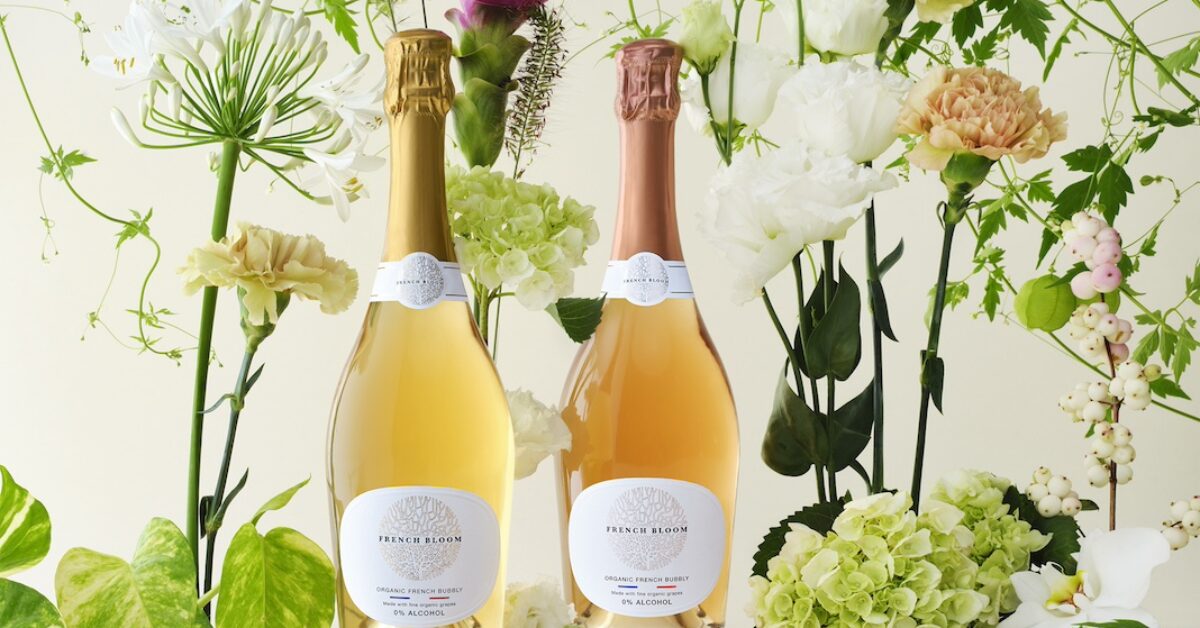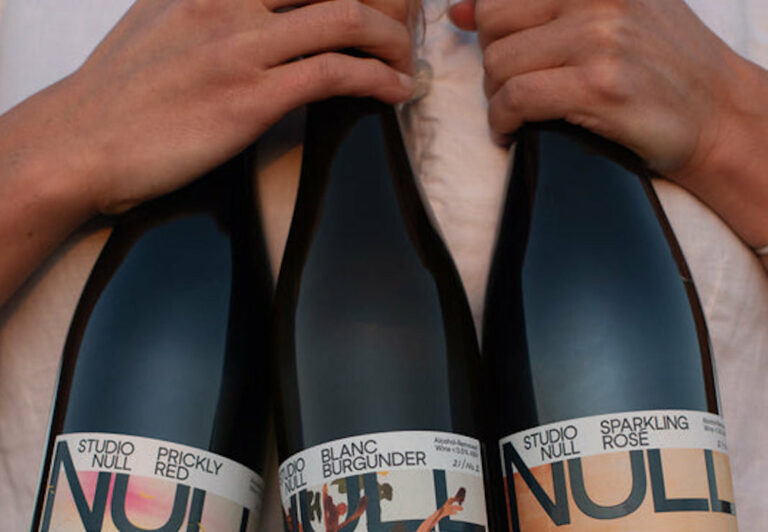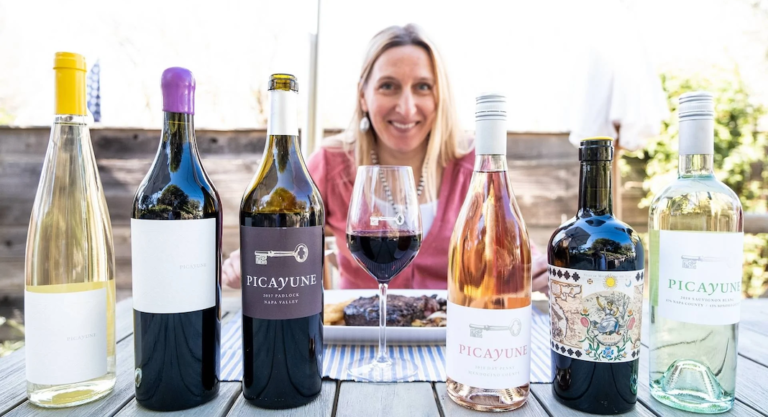There has been plenty written about the sober-curious movement and our quest to find better non-alcoholic beverage options. We know that Millennials are drinking less, and that Gen-Z seems to have gone full teetotal. (Although given that 60% of them are still below the U.S. drinking age, I’m curious to see how well these stats hold up.)
The push and pull between a substance-fueled culture and an abstinence one feels very American. Americans, after all, enacted Prohibition, then reveled in the fact that it made booze cheaper and more accessible. AA was born here; as was Four Loko. We supposedly have a brutal binge-drinking culture, yet a third of Americans don’t drink at all.
When I lived in France, a big deal was made about European moderation. Of course you can have a glass of wine at lunch, it was explained, because you’re not pounding shots on the weekends. Yes, “breakfast wine” is a real category of wine over there, but it’s all about enjoying the flavor, appreciating the terroir… never mind that it gets you buzzed at 10 AM on a Tuesday.

A Non-Alcoholic Apéro
Yet, despite the classic French dedication to tradition, even the French are turning to other options at their evening apéro, including French non-alcoholic wines. One of the pioneers in this category is French Bloom, a zero-proof sparkling wine brand that has been absolutely dominating the Non Alc French space. French Bloom was founded by former Michelin Guide Director, Maggie Frerejean-Taittinger and French model Constance Jablonski. By utilizing the experience of champagne industry veterans like Frerejean-Taittinger’s husband, Rodolphe Frerejean-Taittinger, and conducting extensive R&D to develop new NA winemaking methods, French Bloom has created two signature products–Le Blanc and Le Rosé–that now seem to be everywhere. They are present in 28 countries and counting, and can be found in high-end restaurants around the world. (I recently spotted them at the Michelin-starred Le Jardinier in New York, which serves French Bloom both by the glass and integrated into non-alcoholic cocktails.)
But while French Bloom has become popular in the U.S. and abroad, some of its biggest success has been found in its home country. “It’s funny because we hadn’t even considered France to be an important market for French Bloom at first, we thought what blasphemy to launch an alcohol-free French sparkling wine in a wine country,” Frerejean-Taittinger explained. “We were speechless by the way the product was received… We expected to receive the most traction in the U.S. market, as we understand the United States to be more sober-curious than France. But to our surprise, our fastest growing market has been France. Even though wine is a huge part of French culture, the French still have their reasons for holding off on drinking alcohol.”
Flexi-Drinkers and Story Seekers
There are many reasons someone might hold off on drinking alcohol, which is why the production of French Bloom is designed to cater to every possible consumer need. Their wines are organic, vegan, and halal certified, with no added sugar or sulfites, making them accessible not only to France’s large Muslim population, but to wellness-oriented consumers who are conscious about where their wines come from, what goes into them, and, to go with current trends, how they will affect your blood sugar.
Also, they have a story. This has worked because I’ve been told by many professionals in the wine and spirits industry that what sells most now are drinks with a story. With so many beverages out there to choose from (thanks in part to an influx in celebrity wine and spirits brands), Millennials want to purchase something they can trace back to its roots, something that creates an experience, not just whets a whistle. And some sort of ethical stamp of approval is the cherry on top.
This is true for both drinkers and non-drinkers, as well as for those in the middle. “We estimate close to 80% of our customers are ‘flexi-drinkers’ who mix alcoholic and non-alcoholic drinks, sometimes even in the same evening,” Frerejean-Taittinger told me. Which mirrors the current market for NA drinks. Indeed, creators of NA spirits, beers and wines make more money off of these “flexi-drinkers” than people who don’t consume alcohol at all.
One thing that came up in my conversation with Jablonski, which seems to resonate culturally right now, is the idea that “we are drinking better quality, and less often.” Gone are the days of Crystal Palace and Barefoot Wine (at least, hopefully). People are now saying that they would rather have a glass of good champagne than a whole bottle of piquette. Which makes it the perfect atmosphere in which to launch a booze-free bubbly with a minimum price tag of $39 per bottle. (For Le Blanc—Le Rosé is $44.) That’s more than what many people would pay for a normal bottle of wine, even for a special occasion. (It’s no cheaper in restaurants, with a glass going for $25 at Le Jardinier, more than twice the cost of many of their other NA cocktails.)
But clearly, French Bloom has found a market that is sold on the experience they promise, and isn’t fazed by their premium pricing. “The challenge lies in altering perceptions and creating a narrative that positions French Bloom not as a compromise but as a deliberate choice for those seeking sophistication without alcohol,” Frerejean-Taittinger explained, which is accomplished by “emphasizing the experience rather than just the absence of alcohol.” The experience, as seen through their site and marketing, is a glamorous Provençal daydream, full of women with bronzed skin gallivanting through vineyards at golden hour, pausing for a lovely non-boozy drink in a field of flowers, or by a shimmering blue pool. It’s every European fantasy microtrend of the last year put together, Tomato Girl Summer, Pasta Girl Fall… it’s an Aperol spritz without the hangover.
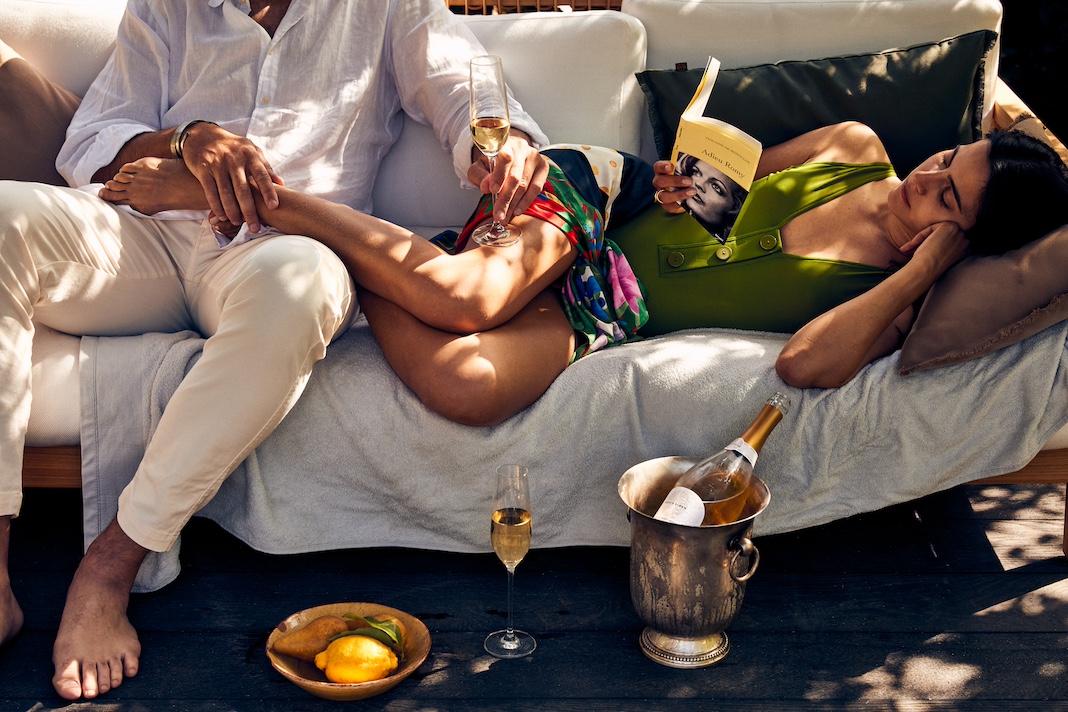
How is French Bloom Made?
So how exactly are these premium cuvées made? It starts with wine produced in the Southwest of France following traditional production methods and aged in oak barrels to add “aromatic complexity.” The wine is then dealcoholized to get it all the way to 0.0% (anything under 0.5% is legally considered non-alcoholic in the U.S.), and then additional ingredients like lemon are added to improve the flavor and mouthfeel. “Much of the French appreciation of wine is about the flavor architecture, and we maintain as many aromas as possible in our dealcoholization process,” Frerejean-Taittinger told me. “The end result is a sparkling wine with a natural nose, nothing synthetic, lots of flavor, and a very clean finish, ” she said.
Is it going to taste exactly like champagne? No, and you’ll probably enjoy it more if you don’t go into it expecting an exact replica. Instead, you’ll find something worth appreciating in its own right, bright and refreshing, with no hint of that grape juice flavor found in many lesser dealcoholized wines. It’s the apéritif for a new era, proof that celebration and intoxication don’t need to go hand in hand… even in France.
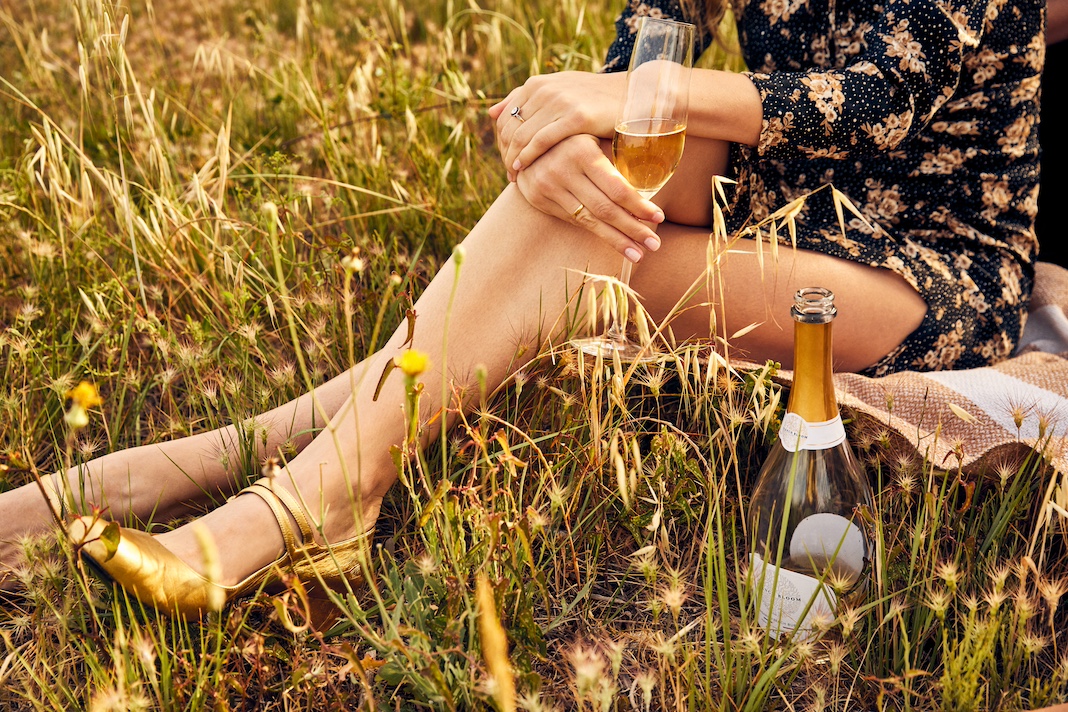
Catherine Rickman is a writer, professional Francophile, and host of the Expat Horror Stories podcast. She is currently somewhere in Brooklyn with a fork in one hand and a pen in the other, and you can follow her adventures on Instagram @catrickman, or on TikTok @catinthekitchen.

